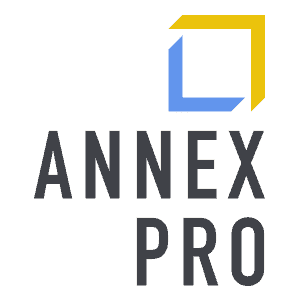5 Tips to Boost Productivity and Streamline Workflows of Your Creative Studio

GUEST BLOG BY STEVE ASHLEY PRODUCT MANAGER – SHOTGRID
One question we hear a lot at Annex Pro is “which collaboration tools are best for creative studios, and in particular, media production?”. The answer of course, is: “The one you are fully utilizing and is helping you create more frames in less time!”.
Depending on how many artists there are, that could be something as simple as an Excel spreadsheet shared in Dropbox, Google Sheets, or tools like Trello and Monday.com
But as creative teams scale up for bigger projects and more of them, the limits of “homegrown” production management systems begin to show. That’s when a solution like Autodesk ShotGrid usually becomes part of the conversation.
ShotGrid is a central hub that unifies the production management and creative process – enabling studios to work more efficiently.
Features like real-time project tracking, allow you to see every step of your production so you can track shots and assets as they move through the pipeline in real-time; resource planning views help you identify overloaded or underutilized artists across the studio, and rebalance work to optimize performance; production insights visualize key production data with the graph widget and time series, status history, and burndown charts.
What size does a creative studio have to be before a unified production management solution makes sense? Here are 5 things to consider before you decide if you’re ready to streamline your workflow and boost productivity:
1. Utilize automation to handle repetitive tasks, such as data entry and file organization.
If you are paying a person to perform the same simple administrative task over and over, consider how automating those tasks would not only stretch your budget, but free up an artist for higher value creative work
2. Take advantage of the approval workflow feature to streamline the review and approval process.
Make well-informed reviews with access to the production’s previous notes, versions, statuses, and more with ShotGrid’s in-context review. Also, editorial integration allows you to review the final product, and instantly pull up any cut to help inform your creative decisions. And finally, Autodesk just announced that ShotGrid RV is now open source, which means a lot more users and developers are coming on stream quickly with community versions that scale.
3. Use the permissions feature to limit access to sensitive information to only those who need it.
As your team scales, security becomes more important. In fact, it’s a requirement of many partners such as Netflix, Amazon, Disney and others. ShotGrid not only handles changing permissions with ease, but there’s a digital paper trail to back you up.
4. Incorporate external systems and applications to expand the functionality of your site.
Plug-and-play integrations enable you to quickly design a custom pipeline with integrated content creation tools, including software you already use every day like Maya, 3ds Max, Nuke, Houdini, Photoshop, Excel, Unity, Unreal Engine and many more.
5. Regularly review and update your permissions and automation to ensure they align with current needs and requirements.
This is the part that takes a bit of discipline. You need to be ready to not only set up solutions like ShotGrid, but make sure to keep them relevant for your projects and artists. Annex Pro and their team of solution specialists can help with the set up and on-going care and feeding of your ShotGrid site.
So...what do you think? Let us know if these 5 tips are helpful, or if you’d to try ShotGrid anywhere in the Americas (Canada, USA, Mexico, Central, and South America), at no cost or obligation. Just drop us a line by clicking the button below and we’ll get right back to you.

